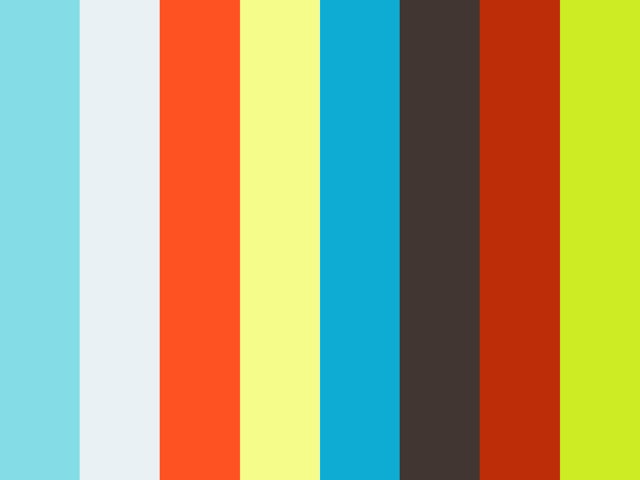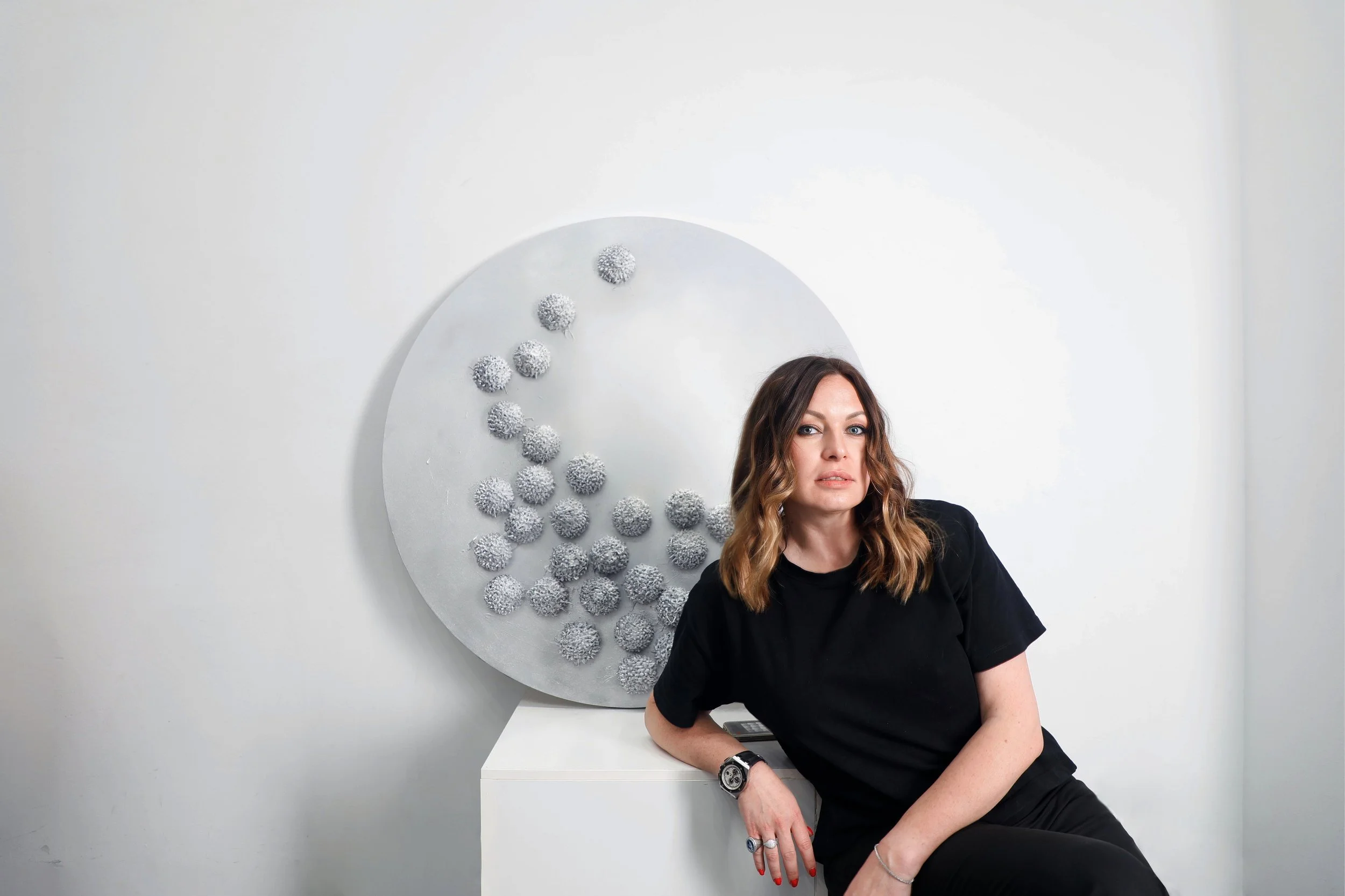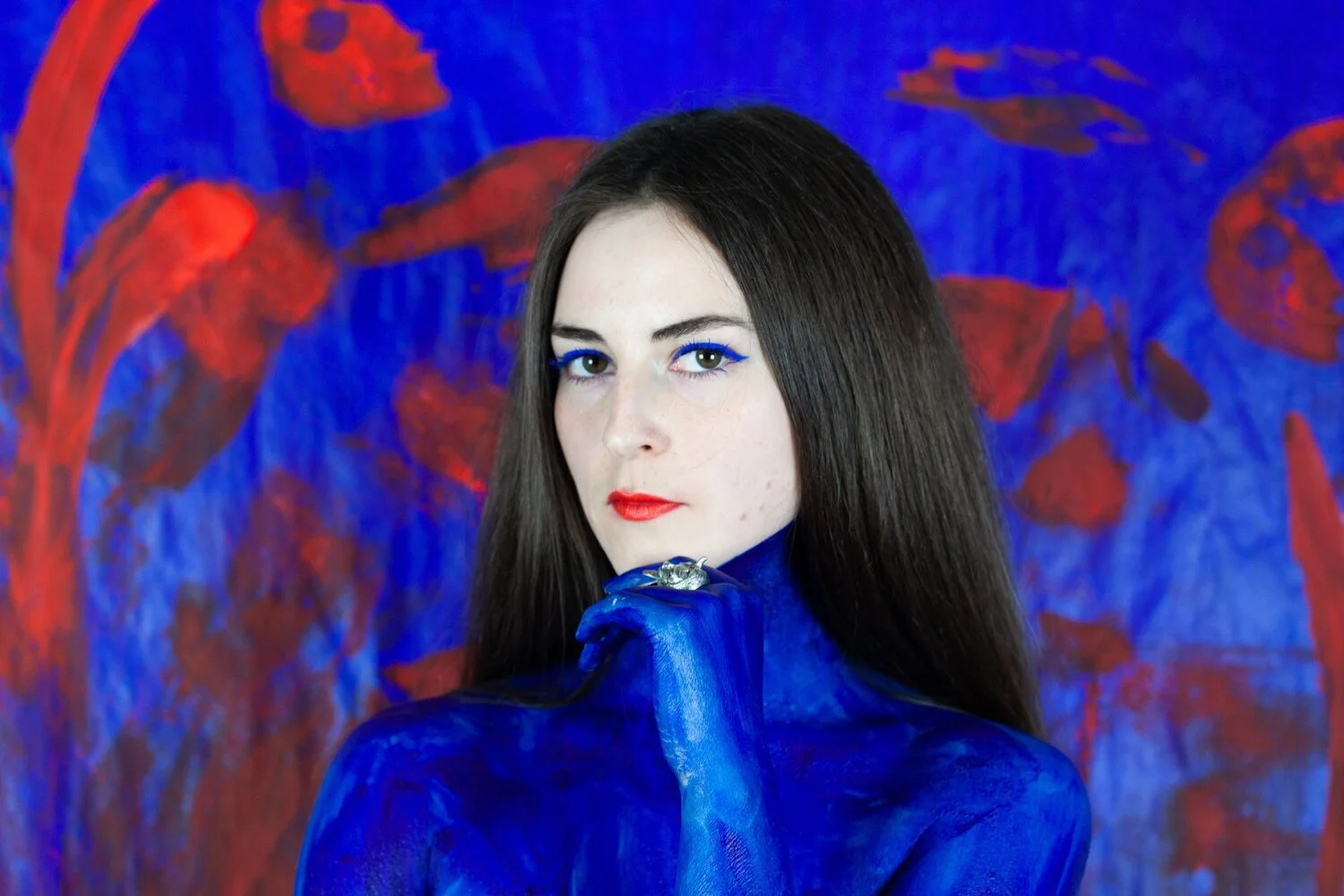9 Questions with Krishna Pulkundwar
Krishna Pulkundwar is a contemporary, experimental abstract painter from India featured in Al-Tiba9 magazine ISSUE04, interviewed by Mohamed Benhadj.
Krishna Pulkundwar deals with different artistic mediums, techniques, and processes. He believes simple is the best, but the simplest thing is the most difficult to create. His work is inspired by every sensible thought, where raw thoughts are subconscious visuals. In day to day activities, problems, attractive forms, desires, expectations, leave reflections on his mind. He visualizes different kinds of images that some of them become imprinted permanently in his memory, and they are formed due to his daily life experience. Eventually, they become the subject of his paintings. For this featured painting series, Pulkundwar creates various visuals in black ink on old newspapers. The density of that black ink was extraordinarily dark and created a lasting impact.
As a professor at the Sir J.J. Institute of Applied Arts in Mumbai, he believes that his students play an essential role in the development of his abstract paintings. There is a large group of admirers and collectors of Krishna’s work worldwide: Prestigious Private and Corporate Collections in New York, Florida, Chicago, London, and in many other countries such as Dubai, Singapore, Ireland, Canada, Germany, France, and India. He has exhibited his abstract works in solo and collective exhibitions in India and around the world.
Krishna, I am happy to be able to have an interview with you today. You are a contemporary, experimental abstract painter from India. Could you introduce yourself to our audience? When did you realize that you were going to become an artist?
Hello, I am Krishna Pulkundwar, a contemporary, experimental abstract painter working in different series. I am always experimenting with different art materials, mediums, techniques and processes. I believe, simple is the best and simplest things are most difficult to create. I work as a professor at Sir J.J. Institute of Applied Art in Mumbai, India and I teach exhibition design display and stagecraft, and also communication design to final year students.
Coming from 'Kandhar', a small lush green village in Maharashtra State in India, my inspirations come from nature. When I was a child, I used to go to farms and rivers with my mother and draw different unidentified visuals with small stones on plane surfaces wherever possible. Also, I collected different textured objects like small pieces of rocks and stones, dried leaves and small branches of trees. When I used to draw something on paper at home or school, I memorized these textures and it reflected in my artworks. During early childhood days, my father was a big support for the aspiring artist in me and he started motivating me with different art materials and art books. In those days, almost daily, no matter what time, I practiced sketching and drawing something in a quest for self-progress.
What fascinated me for most of my childhood, however, was texture; to me, textures add meaning and beauty to an object and everything that surrounds it. Be it, moss in the monsoon, cow dung coated rural floors, shapes and textures of various stones, barks of trees, crumpled dried leaves of autumn, scaled rooftops, bamboo hutments, or coconut shells, the reflections and movements of water in shallow ponds, the stones gleaming under the ripples, the feel and fabric of flowers and petals. Inspirations also came from the textured walls of an aging structure. The walls are man-made, but the ravages on it are from nature. Similarly, with dusty & rusty metal pieces. Man makes the metal; nature gives it the patina. These variations in textures and surfaces are what fascinated me. I think during these early years of my life, the journey of an artist in me began.
Please tell us about your formative years? What other influences shaped your artistic career?
After moving to Mumbai in 1991, nothing seemed the same; but my love for art and the comfort I found in painting not only continued but grew. I found new inspiration in my surroundings and the joyous meeting of the rural and the urban. My move to the city coupled with my growing maturity and confidence as an artist is what perhaps led to this dramatic shift in style and form. It simply describes the shift as a need for change: “Despite coming from a rural background, I cannot deny the effects of urbanization on me”.
Music is also a supportive element for my painting career like a musician does "Riyaaz" every day, I must paint every day, listening to the strains of classical music. Painting for me is "Swanand"(my self-pleasure).
There are a large group of admirers and collectors of my work worldwide (Prestigious Private and Corporate Collections in cities like New York, Florida, Chicago, London, and many other countries i.e. Dubai (U.A.E.), Singapore, Ireland, Canada, Germany, France, and India.) I have done 10 solo shows and more than 35 group shows of my Abstract works in India and abroad. I also participated in many shows worldwide.
As a fine art professor, what role do your students play in the development of your abstract paintings?
My students are the most important factor in my development as an abstract painter. I enjoy the constant energy that my students give me and charge myself by their fresh and optimistic view of life.
Being a teacher, I interact with students almost daily, and these conversations with my students inspire me. Their analytical, thoughtful, and sometimes random questions make me learn more and help me keep myself updated with the emerging times. Many times, the colorful attire of students suggests interesting color schemes and compositions. Every year, I meet a new batch of students, talk to them, and interact with them. It helps me stay young in thought and actions. In a way, I give my 10% knowledge and the students, in turn, give me 90% inspiration. That is why I feel that not a single day of my life goes waste; because every day, I believe, I have something good, something worthwhile; be it as a teacher or an abstract painter. Every day is cheerful for me. Nowadays students are more in-tune with new technologies in Art and they keep themselves updated all the time. I feel that since I am shaping the generation of tomorrow, being a teacher, so the content of my lecture should also be knowledgeable and updated.
You experiment with different art materials, mediums, techniques, and processes, how do you decide if a medium is the best fit for your artistic production?
I have worked in almost every medium i. e. Watercolour, Pastel, Oil, Acrylic, Ink, Charcoal, Collage and Mixed media. As every painting gives me pleasure, so does the medium. Each medium keeps on encouraging me to explore and experiment. Now, after the experience of different mediums, I believe that experimenting in art gives us more liberty and confidence to explore.
I have developed my equipment to create textures and different effects. Sometimes I use ink on newspapers for my series because the subject of that series is based on different topics and I am concerned with those things happening around me. I have always had the desire to develop something new to express myself more effectively through my paintings. This is what inclined me towards developing my own unique Black and White abstract style. The mediums I use for my paintings vary according to the requirement of the subject, but the style and beauty have the same astonishing effect on the viewer.
We are featuring part of your 100 works series ‘Subconscious reflections’ made of Ink on newspaper & collage. What metaphor is behind this project?
Recently, I have completed more than 100 works of my new abstract series ‘Subconscious reflections’, Ink on newspaper & collage and also Ink on paper. Every sensible thought inspires me to work. I consider raw thoughts as subconscious visuals. Many a time, in my day to day activities, some problems, attractive forms, desires, expectations leave some reflections on my mind and those reflections create a visual gallery. When I close my eyes, different kinds of visuals appear in my mind. Out of those visuals, some of them become imprinted permanently in my memory and some of them slip out of my memory. Some of these visuals are formed because of the things happening in my surroundings, and eventually, they become the subject and part of my paintings. And further this makes-up a very influential part of my perception in my abstract work and myself.
Your process seems to be a unique way of documentation reflecting layers of time and space to memories a specific period of your living. Please tell our readers about the subconscious part of your process and how does your interior life reflects on the final result of your abstract work.
Every time I try something new in my creation, and something original for me is my own experience, thus I recall my daily life experiences to create my art. Every day as a human being I react with many things, optimistic and pessimistic too. For example, vandalism and violence in society, violence against women in society, refugee issues worldwide, poverty in society, people with disabilities, local and global population and environmental issues, problems leading to homelessness and street children, senior citizens in old age homes, depression and so on. These and many more such issues leave a silent impact on my mind which could be a possible subject for my abstract work. When I think of creating something, the strongest impact from the issues I have interacted with earlier emerges automatically on my paper as a visual form and my process of abstract work begins.
I want to share the real-life experience with the readers. When I was in 5th class, my school was far away from my home in Bahaddarpura, Kandhar, I used to walk to school and the road passed through a graveyard, many huge different textured rocks were placed over there. We friends used to sit and play on those rocks during our way to & from school, this experience becomes imprinted permanently in my subconscious memory. Even today when I try new texture for my work, automatically I remember those textured stones and rocks which reflects on the final result of my work.
What do you find most challenging about using ink?
For this Abstract painting series ‘Subconscious reflections', I chose Ink on newspapers as a medium because from my childhood I was very close to those two mediums. Black & white medium interests me more than color. The reason lies in my past. In school, we had some local exhibitions, for which I used a particular kind of Black Ink which was available in granular form and was water-soluble. Almost every day I used to try various visuals in Black ink on old newspapers. The density of that black ink was extremely high and it created an amazing impact on me and my artworks. I used to get so engrossed in it and wouldn’t leave the artwork until it was finally completed. Since then I share a special relation with Black Ink & Newspaper.
Many artists consider black to be a negative color. But in my opinion, I consider it as the most positive one because black ink inspires me more than a color. While doing an abstract work in color, I have various colors to denote different feelings, but to denote under the same feelings and forms in the absence of other colors and using only black, is a challenge in itself and that is why I am all the more euphoric after a work in black & white, so I had successfully laid my subject as an artist in only two colors i.e. presence & absence of light. Also using Black Ink for my creation is more challenging because whatever I am going to express through my art, I should be very confident and sure about the content and the desired effect because there will be no chance to correct it once I use Black ink.
What current series are you working on?
I am doing a current series on 'Urban Families and their challenges in the modern world'. It is based on a concept, that, due to the easy availability of gadgets and excessive use of the internet we have lost humanity, dialogue, and communication between our families.
Are you working on any project that we will be able to see soon?
Yes, I am doing a work project for an International award and it is called 'Future'. Based on what we sow today; our future generations reap likewise.




















